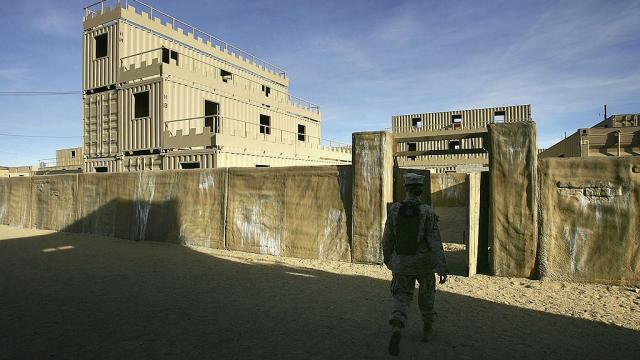The Marine Corps says it will need to spend $US5 ($7) billion over the next 30 years to update two recruit depots for both climate resiliency and the integration of women into boot camp, the Marine Corps Times reported. This move comes as the U.S. military is pushing for better preparation for climate change-fuelled disasters like extreme flooding.
The two depots are based in San Diego, California and Parris Island, South Carolina. The Parris Island depot is more than 100 years old and is near low-laying land that will eventually flood.
“Tidal flooding affects low-lying locations around MCAS Beaufort and MCRD Parris Island, including extensive wetland areas, 10 times per year on average,” according to a 2016 case study on the future of the depots. “By 2050, the currently flood-prone areas within both bases could experience tidal flooding more than 300 times annually and be underwater nearly 30 per cent of the year given the highest scenario.”
A 2021 article in the Marine Corps Times outlined how some military leaders were concerned about the lack of plans for preventing the South Carolina depot from flooding regularly in the future. One idea involves building a seawall around the facility.
There are other bases in trouble, too: The U.S. Navy’s huge station in Norfolk, Virginia is experiencing sea level rise at 4.6 millimetres per year along with land subsidence, and several bases have been damaged by extreme weather in recent years, according to 2019 report from Defence One.
Earlier this month, the U.S. Army (the country’s oldest military branch) unveiled a plan to supposedly make its operations more climate friendly, including rolling out electric military vehicles and installing microgrids on its bases that will be powered by renewable energy such as solar panels. The branch will also train soldiers to withstand and respond to natural disasters like floods and heat waves.
Regardless of how much the Army and the Marine Corps weatherize their bases and prepare for future disasters, the U.S. military is a major polluter that uses a tremendous amount of water and energy to run hundreds of military bases around the world. Moving service members across the globe for ongoing operations and maintenance and training also contributes to the military’s already massive carbon footprint. The only greener military is a much smaller one, with fewer bases and vehicles around the world.
